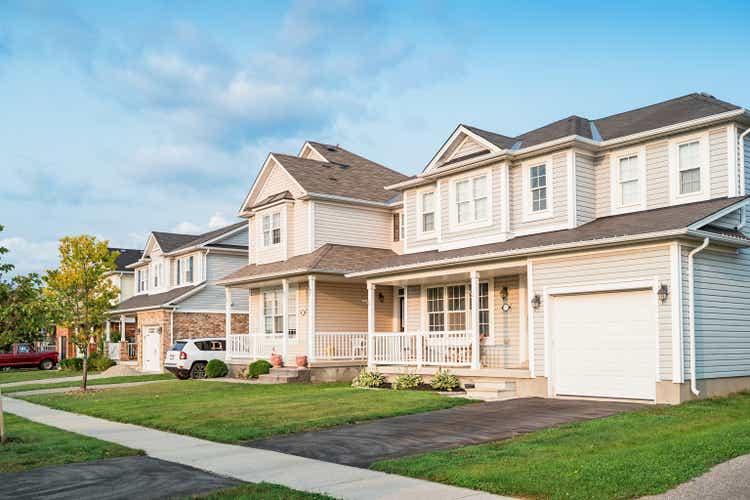benedek/iStock via Getty Images
The Bank of Canada hiked base rates a whole percentage point yesterday – its most significant one-time increase since 1998 – now at 2.5% from .25% four months ago in March. Futures are pricing in a 43% chance that the US Fed will follow suit with its own 1% increase at its next policy meeting on July 27.
These are huge increases in a short time frame. The Canadian prime lending rate now jumps to 4.7%, and most home equity lines of credit (HELOCs) to 5.2%, while conventional variable rate mortgages are in the 3.85-4.2% range. Federal rules require borrowers to prove they can make their mortgage payments at an interest rate at least two percentage points above their offered mortgage rate. With a five-year fixed-rate mortgage near 5%, borrowers would have to prove they can make mortgage payments with a notional interest rate near 7% – a rate level not seen since the year 2000. Meanwhile, the average Canadian home price was $164,000 in 2000 compared with $816,720 in February 2022.
As the pool of able buyers shrinks, home prices have already declined by double-digit percentages in some areas. While impossible for most to fathom, a 40% drop would only bring home prices back to where they were in 2020. And given the extreme magnitude of Canada’s late great housing bubble, a 40% decline would be a reasonably modest outcome.
Suffice to say, this mean-reversion cycle, while necessary, is set to be painful for many.
Disclosure: No positions.
Editor’s Note: The summary bullets for this article were chosen by Seeking Alpha editors.


Be the first to comment